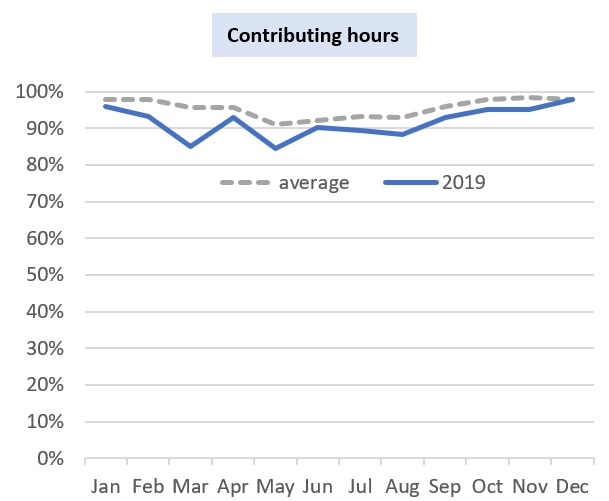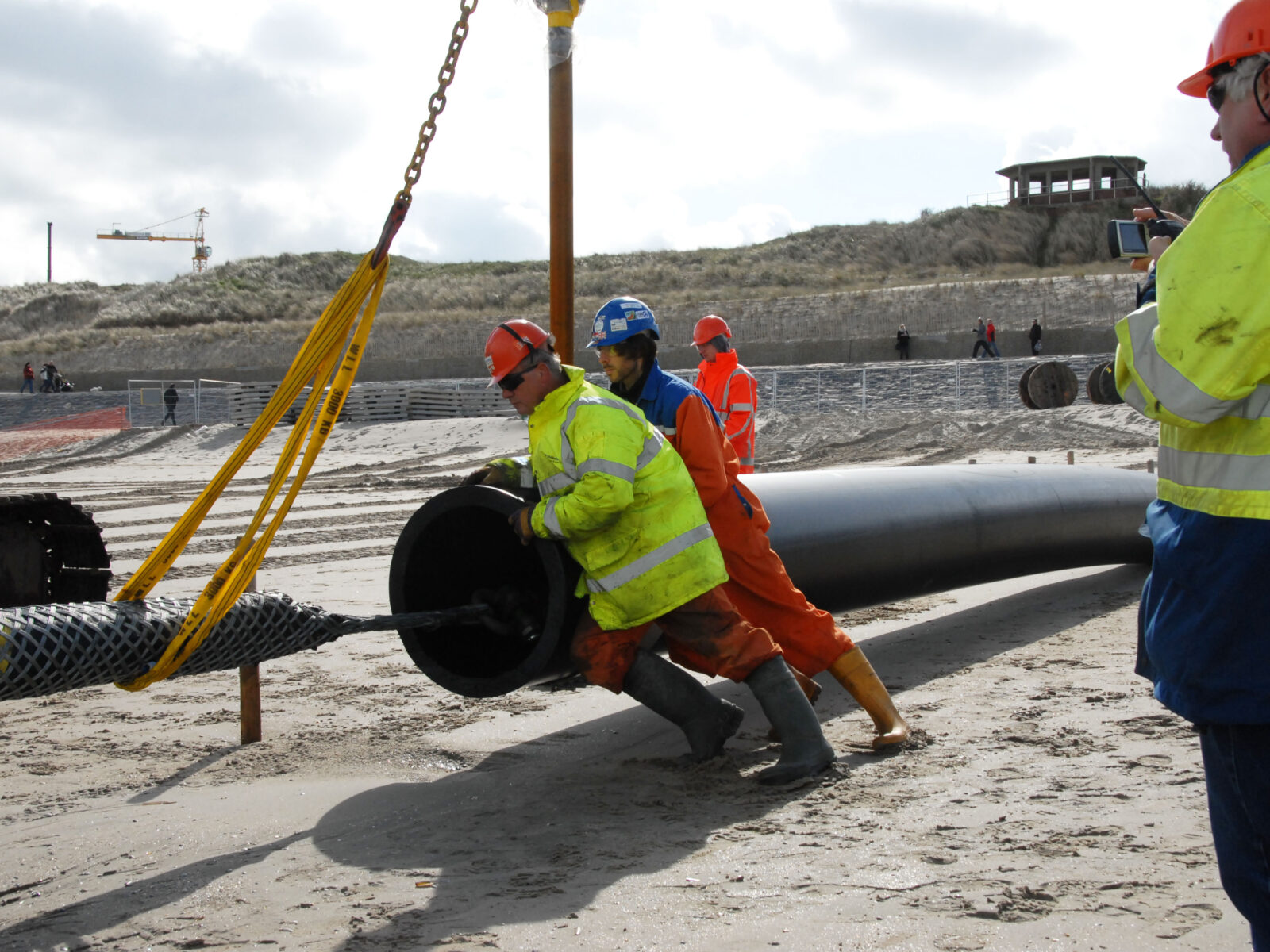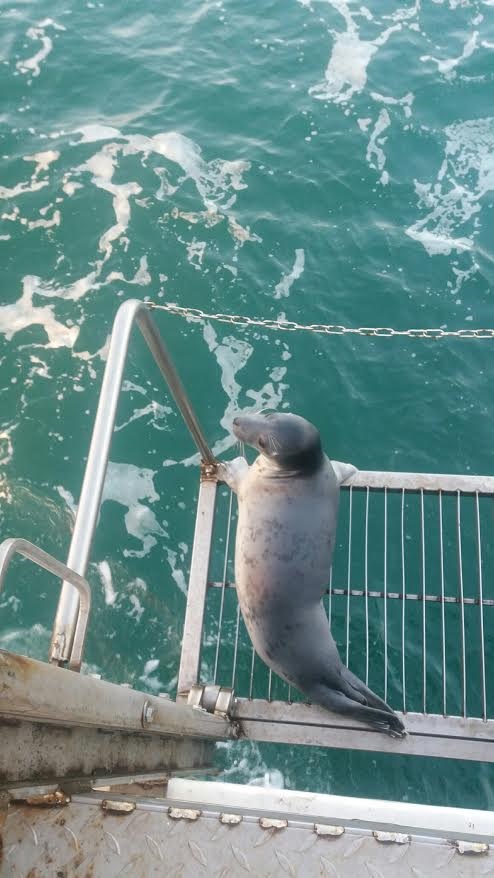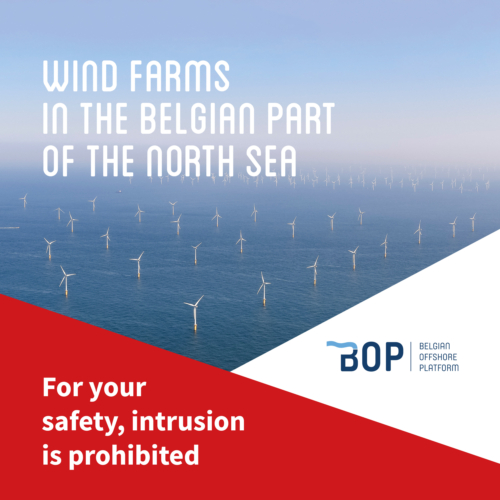FAQ
A) Energy
The Belgian offshore wind farms produce electricity more than 90% of the time: the wind turbines produce from a light breeze (2 Beaufort) to a heavy storm (11 Beaufort). More than 40% of wind turbines can continue to produce during heavy storms.
As the wind blows harder at sea, an offshore wind turbine is designed to produce electricity at very high speeds (up to 110 km/h). If higher wind speeds are detected, the turbine automatically switches to safety mode.
In concrete terms, this means that the turbine switches to the ‘feathered position’: the blades position themselves differently depending on the wind, which reduces the impact on the turbine and the foundations. The ‘feathered position’ can also be activated at lower wind speeds. The blades are therefore not clamped in a fixed position, but continue to rotate freely in a protective position. Above the maximum speed (cut-off speed), no electricity is supplied to the grid to protect the rotor.
As soon as the wind speeds decrease again, the wind turbines start up again automatically.
Since end 2020, 8 offshore wind farms with a 2.3 GW capacity can together produce approximately 8 TWh of green electricity annually, which is equivalent to the electricity consumption of 2.2 million homes, i.e. almost half of all Belgian homes.
With the new Marine Spatial Plan (2020-2026), offshore wind energy capacity can double to 4.5 GW in the coming years, so that offshore wind energy can meet one fifth of the electricity demand. The sector is doing everything in its power to realize this as soon as possible.

Offshore wind turbines produce electricity more than 90% of the time: they turn from a light breeze (2 Beaufort) to a violent storm (11 Beaufort). There is always wind at sea and the latest wind turbines can also continue to produce during severe storms.

B) Economy
Nearly 16 000 jobs will be created between 2010 and 2030 through the development, construction, maintenance and dismantling of wind farms and their electrical infrastructure. More information on the macroeconomic impact of the offshore wind industry can be found here.

C) Ecology
Wind turbines and foundations are almost entirely recyclable: 90% of their components are recyclable. When a wind turbine has to be dismantled (after about 25 years of producing green electricity), most of its materials are reused for the construction of new wind turbines. Materials that cannot be reused are fully recycled.
The wind and renewable energy industry is growing considerably and research is being carried out to build 100% zero waste wind turbines. For example, wind turbine manufacturer Vestas has recently committed to producing zero residual waste wind turbines by 2040.
Ten years of environmental monitoring by independent scientists have demonstrated that there is an increase in marine biodiversity in and around wind farms. More information are available on the website of the Royal Belgian Institute of Natural Sciences.

A wind farm emits 175 times less CO2 than the most modern gas plants. After 6 months to a year, an average wind farm (around 300 MW) completely neutralizes the CO2 emissions caused by its construction and operation. After that, the wind turbines continue to produce electricity for at least 20 years in an environmentally and climate-friendly way, without emitting CO2 or harmful substances and without producing harmful waste.
D) Visit the offshore wind farms
Of course! You can find all the information you need here: Take a closer look at the wind turbines in the Belgian North Sea.
No! Transiting, diving, kite surfing and fishing are not allowed in the wind farms in the Belgian North Sea for safety reasons.
Why not? Because the wind-farm area is actually one huge power station. You surely wouldn’t go mountain biking in a power station? Sailing in the wind farms poses a hazard to you and your boat. There is always a risk of a collision! If you ran into difficulties and had to make an emergency stop, for example, your anchor could damage the 220,000 volt high-voltage cables lying on the seabed between the wind turbines, which would mean shutting down the electricity production. This could easily cost you several million Euros in damages!
For more information, see our leaflet “Wind turbine zone in Belgian North Sea: access prohibited“.
